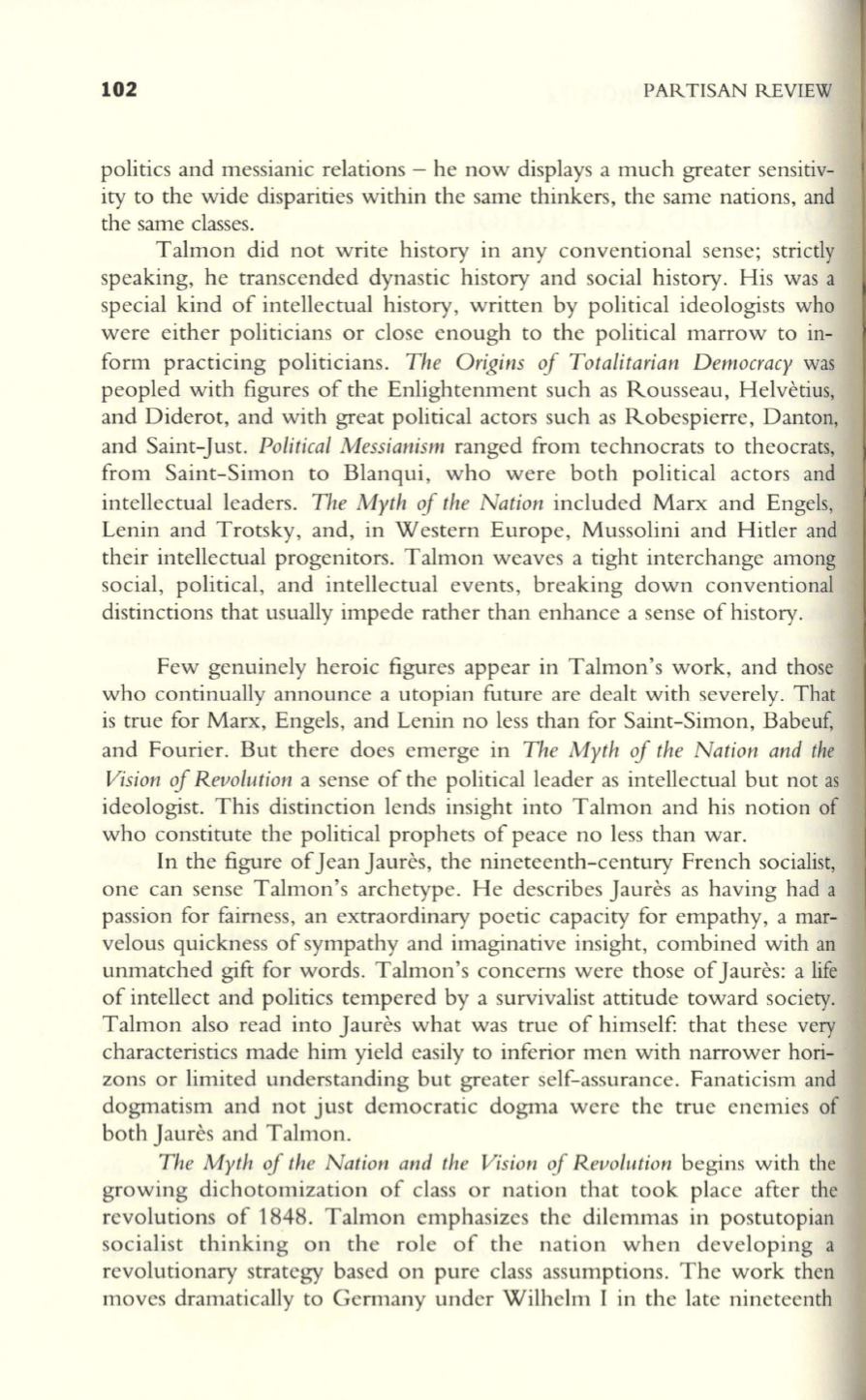
102
PARTISAN REVIEW
politics and messianic relations - he now displays a much greater sensitiv–
ity to the wide disparities within the same thinkers, the same nations, and
the same classes.
Talmon did not write history in any conventional sense; strictly
speaking, he transcended dynastic history and social history. His was a
special kind of intellectual history, written by political ideologists who
were either politicians or close enough to the political marrow to in–
form practicing politicians.
The Origins oj Totalitarian Democracy
was
peopled with figures of the Enlightenment such as Rousseau, Helvetius,
and Diderot, and with great political actors such as Robespierre, Danton,
and Saint-Just.
Political Messianism
ranged from technocrats to theocrats,
from Saint-Simon to Blanqui, who were both political actors and
intellectual leaders.
The Myth oj the Nation
included Marx and Engels,
Lenin and Trotsky, and, in Western Europe, Mussolini and Hitler and
their intellectual progenitors. Talmon weaves a tight interchange among
social, political, and intellectual events, breaking down conventional
distinctions that usually impede rather than enhance a sense of history.
Few genuinely heroic figures appear in Talmon's work, and those
who continually announce a utopian future are dealt with severely. That
is true for Marx, Engels, and Lenin no less than for Saint-Simon, Babeuf,
and Fourier. But there does emerge in
The Myth oj the Nation and the
Vision oj Revolution
a sense of the political leader as intellectual but not as
ideologist. This distinction lends insight into Talmon and his notion of
who constitute the political prophets of peace no less than war.
In the figure ofJean Jaures, the nineteenth-century French socialist,
one can sense Talmon's archetype. He describes Jaures as having had a
passion for fairness, an extraordinary poetic capacity for empathy, a mar–
velous quickness of sympathy and imaginative insight, combined with an
unmatched gift for words. Talmon's concerns were those ofJaures: a life
of intellect and politics tempered by a survivalist attitude toward society.
Talmon also read into Jaures what was true of himself: that these very
characteristics made him yield easily to inferior men with narrower hori–
zons or limited understanding but greater self-assurance. Fanaticism and
dogmatism and not just democratic dogma were the true enemies of
both Jaures and Talmon.
The Myth oj the Nation and the Vision oj Revolution
begins with the
growing dichotomization of class or nation that took place after the
revolutions of
1848.
Talmon emphasizes the dilemmas in postutopian
socialist thinking on the role of the nation when developing a
revolutionary strategy based on pure class assumptions. The work then
moves dramatically to Gem1any under Wilhelm I in the late nineteenth


